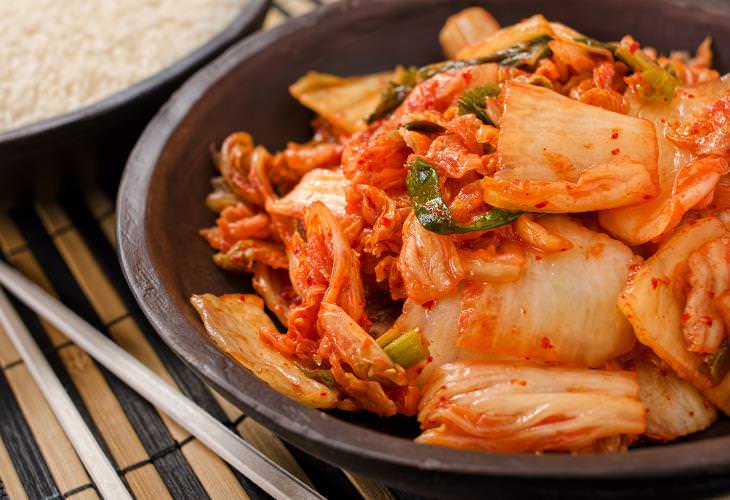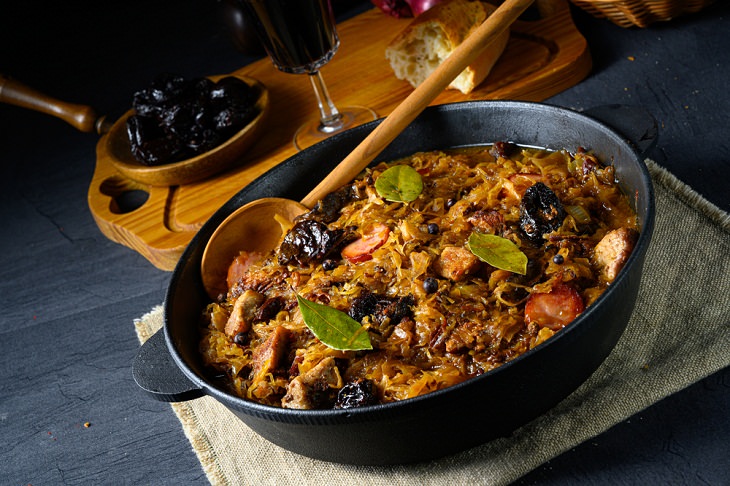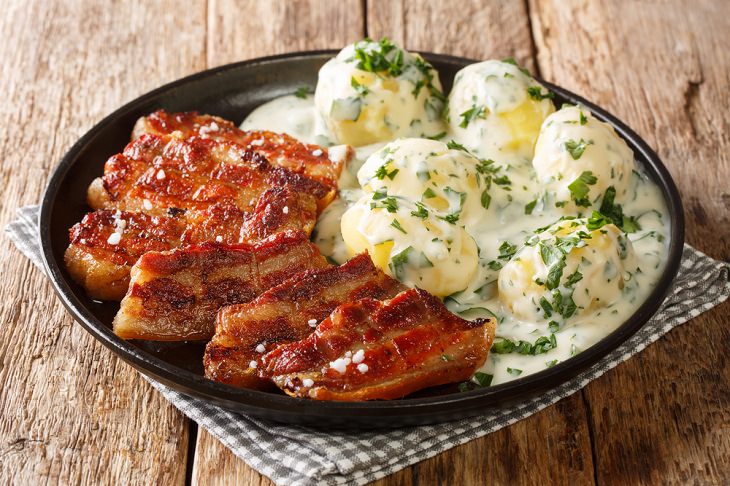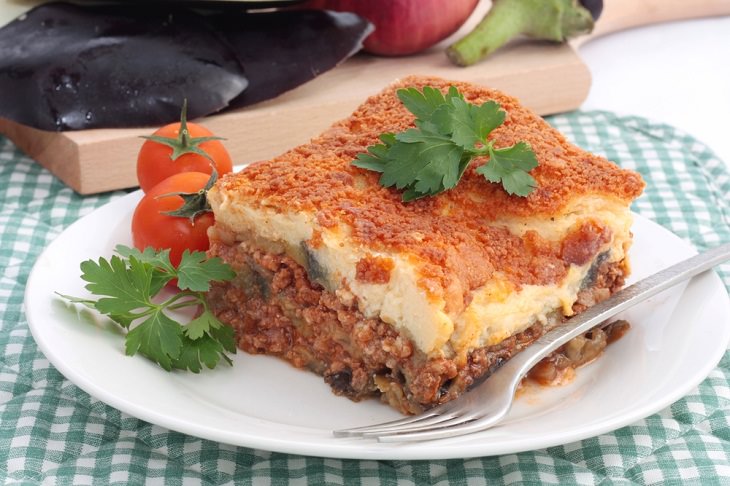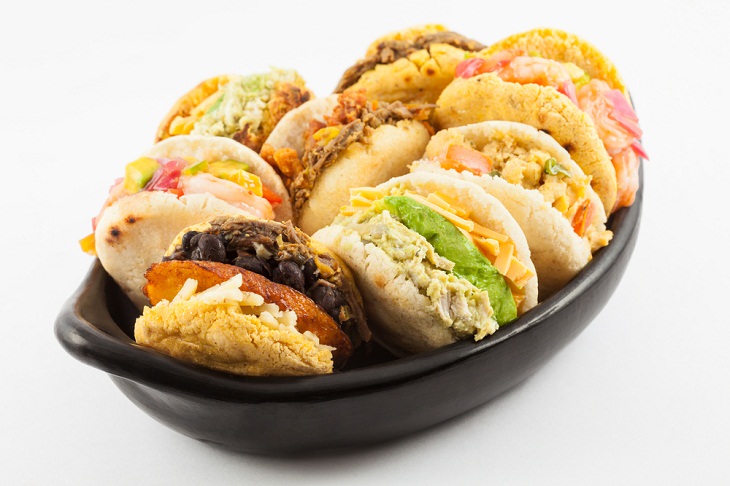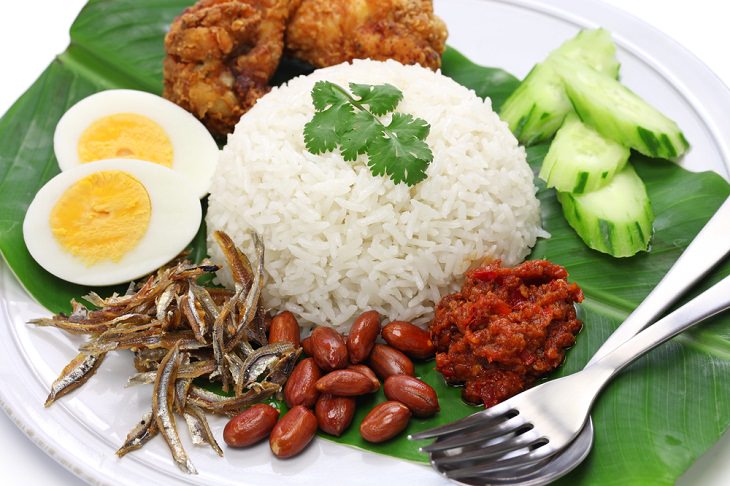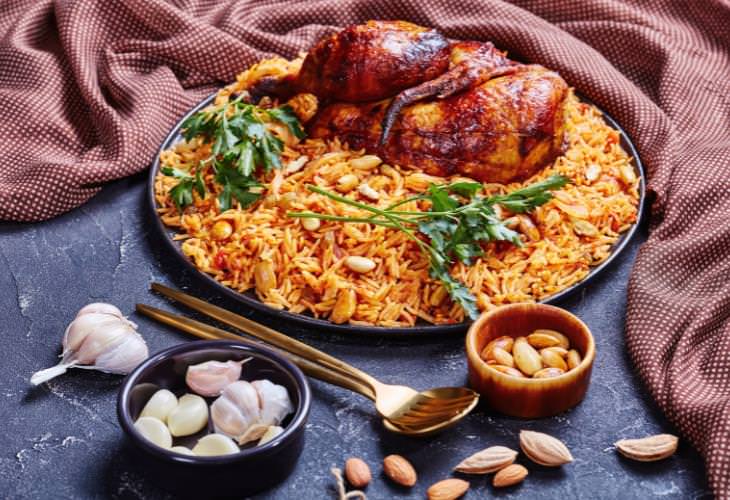Kimchi (pronounced gim-chee) has become highly popular in the last 15 years in the west. It's basically spicy, fermented cabbage whose leaves have been packed and coated with garlic, ginger, green onions, hot red pepper flakes, and Korean chilies. Since it’s a fermented dish, it has a tangy, pungent flavor similar to that of sauerkraut. However, the garlic in kimchi boosts its taste. It has a crunchy texture and can be eaten immediately or when it’s very well fermented.
In Korea, kimchi is a staple part of the diet of most households and is eaten with breakfast, lunch, and dinner. In fact, most Korean homes have a separate kimchi refrigerator!
2. Bigos – Poland
Bigos is a traditional Polish stew of sauerkraut and pork and also includes different types of meat, fruits, and vegetables. This Polish stew was taken on journeys and for hunting in the 17th century and is hence called “hunter's bigos”.
Bigos is a highly versatile dish and any meat can be used in its preparation if pork isn’t available. Potatoes, bacon, and kielbasa are some of the additional ingredients that make this dish complete. In Poland, a bowl of bigos is considered a hearty and comforting meal. It’s best washed down with a glass of vodka.
3. Tom Yum – Thailand
Tom yum is a hot, spicy, and sour Thai soup containing prawns or chicken and mushrooms, along with veggies, and fragrant spices, such as lemongrass. It’s a fragrant and soothing soup that is also very healthy – one cup has fewer than 100 calories.
The flavor of tom yum is typically sour with a mild sweetness from Nam prik pao paste (a Thai chili paste with a combination of smoky, spicy, and sweet flavors). You might not be able to taste the lemongrass, but its aroma should hit your nose as you take a slurp.
Tom yum soup is easily available in most Thai restaurants all over the world.
4. Stegt Flaesk – Denmark
The Danish national dish of stegt flaesk consists of fried pork belly served with potatoes and parsley sauce (a creamy flour-based gravy). It’s a classic Danish dish that originated around the middle of the 1700s in the rustic Danish country kitchen. In 2014, it was voted the country’s first national dish by the people.
The sliced pork belly in stegt flaesk is usually fried to a crisp and balanced well with a pile of small boiled potatoes and parsley sauce. It’s a tasty, but very filling, dish. A few sliced beets can also be added to it to balance the taste.
5. Moussaka – Greece
If you love lasagna, then you have to try moussaka. This traditional Greek dish is made with veal or lamb and layered with thinly sliced potato or sliced eggplant. The meat is topped with a creamy béchamel sauce (made from a white roux and milk) and flavored with cinnamon and pimento. Like lasagna, moussaka is coated with a rich white sauce and tastes like an exotic version of the Italian dish minus the pasta.
6. Ceviche – Peru
Ceviche is one of Peru’s most famous and delicious meals and has been declared a part of the country’s national heritage. This dish is basically raw fish and seafood marinated in freshly-squeezed citrus juice (usually lemons and lime or bitter orange). The citrus juice causes the proteins in the fish to coagulate (effectively partly cooked). So, it’s served cold or at room temperature.
The classic Peruvian ceviche is composed of chunks of raw fish - sea bass, halibut, Mahi-mahi, tilapia, and snapper are some of the popular fish used for making ceviche. It can also include shrimp, scallops, squid, and octopus.
Ceviche can be eaten as a first course or main dish. It’s such an important dish in Peru that they even have a national day for it!
7. Arepa – Venezuela
Arepas are maize-based flatbreads jam-packed with a variety of ingredients. They resemble English muffins and are stuffed with all kinds of toppings or fillings - from avocados to salty cheese to smoked chicken and other meats. Other popular stuffings include scrambled eggs, black beans with cheese, seasoned ground beef, and avocado. It’s a very versatile dish and you can customize it by adding your personal touch. Many people like to add more flavor to arepas by adding shredded carrots or beets. To make them healthier, you can add chia seeds, oats, or flax seeds to them.
It’s the quintessential Venezuelan street food that can be eaten as a main dish or as a side dish and is perfect for breakfast, lunch, or even dinner!
8. Nasi Lemak – Malaysia
“Nasi lemak” is a Malay word that literally means ‘fatty rice’. The dish includes fragrant rice cooked in coconut milk and pandan (knotted screwpine) leaves and is served with a side of sambal (a spicy paste), eggs, cucumber slices, roasted peanuts, and anchovies. Spices such as ginger and herbs like lemongrass are often added for additional fragrance. It’s a deliciously fulfilling meal that’s one of the most loved foods in Malaysia. The combination of all the ingredients together in the mouth is simply exquisite and needs to be experienced once.
9. Kabsa – Saudi Arabia
Kabsa is a traditional national dish of Saudi Arabia. This spiced chicken-and-rice dish is typically served with fried almonds, pine nuts, raisins, parsley sprigs, and a citrusy yogurt sauce. The spices used in kabsa are what make it unique and flavorsome. Black pepper, cloves, cardamom, saffron, cinnamon, black lime, bay leaves, and nutmeg are some of the main spices that go into its preparation. The meat that accompanies the spices is usually chicken, but can also be lamb, goat, camel, or sometimes beef, fish, and shrimp. The meat is placed on top of the rice, and the dish is served on a large platter.
Kabsa is extremely popular throughout the Gulf States of the Arabian Peninsula.
Share this post with your friends and family...

